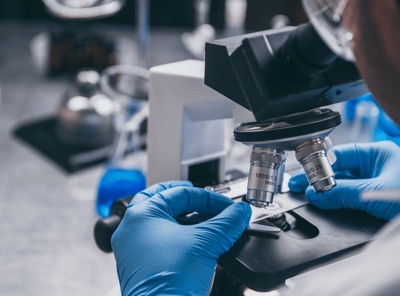Sugar glucose is the body’s primary source of energy. Maintaining a healthy level of glucose in blood (not too high or too low), so that it can be delivered to all the other tissues of the body, is regulated by the hormone insulin. Insulin is produced in one very small part of the pancreas called the islets of Langerhans, by one specific type of cell called a beta-cell (β-cell).
As insulin deficiency and hypoglycemia (low blood sugar) are sometimes associated with PWS, researchers are strongly motivated to discover how PWS affects pancreatic development and function. FPWR-supported researcher Rob Nicholls at the University of Pittsburgh has long studied pancreases of PWS-model mice, and originally reported that PWS mice exhibit abnormal islet architecture and reduced secretion of insulin and another hormone, glucagon. He has now developed a new cell model that allows researchers to dig deeper into the molecular basis for the decreased insulin secretion by PWS β-cells. The generation and characterization of this new PWS β-cell model is described in a recent article published in the journal PLOS Genetics.

A popular cell model used by researchers who study β-cells and insulin secretion is called the INS-1 model. These β-cells isolated from rat pancreas continue to secrete insulin in response to glucose, even when cultured in a lab dish. The Nicholls lab used CRISPR gene editing technology to make the PWS deletion in these cells and then thoroughly characterized the molecular changes that might explain their altered function.
The PWS deletion led to a 35% reduction in insulin secretion from the INS-1 cells. However, PWS INS-1 cells still responded to glucose stimulation similarly to control INS-1 cells, demonstrating that there are no defects in glucose sensing and response mechanisms. Decreased insulin secretion was confirmed using a special technique that allowed precise measurement of the amount of all secreted hormones, called mass spectrometry (or “mass spec”). This showed that the hormones amylin and NPY were also secreted at lower levels in PWS INS-1 cells compared to the original INS-1 cells. The mass spec analysis of cellular proteins unexpectedly revealed deficiencies in multiple “endoplasmic reticulum chaperone proteins," prompting the researchers to propose a new hypothesis explaining the compromised hormone secretion.
The endoplasmic reticulum (ER) is the site of most protein synthesis in the cell. Proteins are built by adding amino acids one by one into long chains which fold into unique shapes that allow them to function. For many proteins, this folding needs an assist from other proteins called “chaperones." The PWS INS-1 cells showed decreases in abundance of at least ten different ER chaperone proteins. The effects of chaperone deficiency are more pronounced in periods of stress to cells, such as may be caused by exposure to certain drugs. To confirm the chaperone deficiency in the PWS cells, the researchers applied these drug-based stressors, and indeed PWS INS-1 cells displayed greater activation of all ER stress regulatory pathways than control INS-1 cells. How does the loss of PWS genes lead to this decrease in ER chaperones, and how does chaperone deficiency lead to reduced insulin secretion? The researchers begin to explore these questions.
Protein production in a cell can be described as a two-phase process: “transcription” of mRNA encoding the desired protein from genomic DNA, which contains such instructions for building all proteins; followed by “translation,” which is the assembly of the protein as described above using that mRNA template. Missing ER chaperones could result from failure in either of these steps. The Nicholls lab employed a tool called RNA-seq, which sequences and counts every mRNA transcript in a cell, to determine if ER chaperone genes were being transcribed in normal amounts. (Note that by sampling all mRNAs in a cell, we can also ask the same question about every gene in the genome, and this data may prove useful in the future in studying pathways yet to be discovered.) They observed reductions in mRNA abundance for ER chaperones and also for insulin, suggesting that the observed deficiencies in protein abundance were due, at least in part, to less transcription of these genes and therefore less template upon which the cells could build those proteins.
Earlier studies have directly linked ER chaperones and insulin – chemical inhibition, knockdown, or ablation of multiple individual ER chaperones have all resulted in diminished insulin synthesis, processing, and secretion. These observations taken together may justify an interpretation that ER chaperone deficiency is the primary molecular abnormality contributing to diminished insulin secretion.
What are the next steps?
While it was demonstrated that the ER chaperone deficiency begins with transcription, the regulatory network that links PWS genes with transcription of ER chaperone genes still needs to be elucidated. Recall that in this PWS INS-1 model the entire PWS locus has been deleted. It will be interesting to see which single-gene deletions can similarly disrupt ER chaperone expression. These studies must then also be extended to the other hormone-secreting cells of the pancreas to complete the picture of PWS glucose homeostasis. Further, it will be interesting to review RNA-seq data from hypothalamus and neuronal cell models to determine if similar ER chaperone dysregulation may contribute to the observed deficiencies in neuropeptide production and secretion in the PWS brain.








